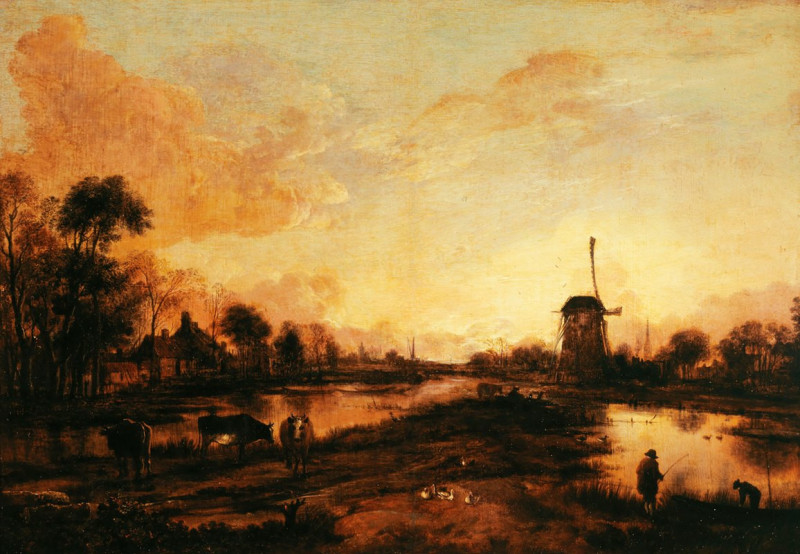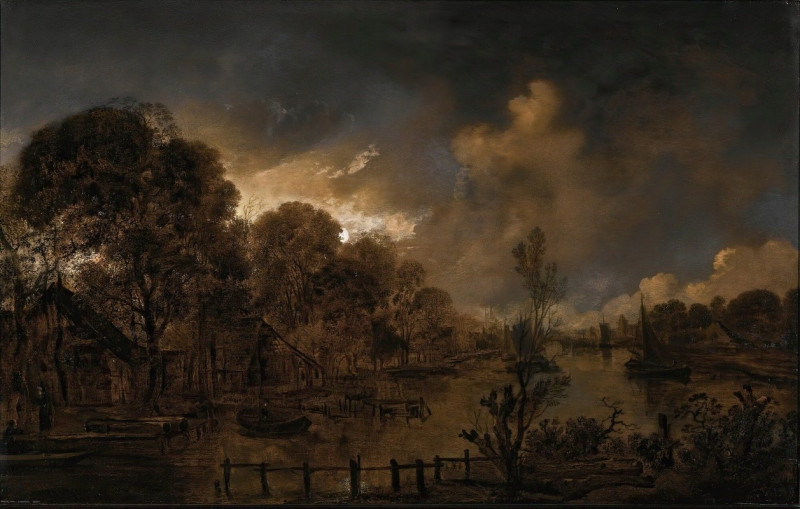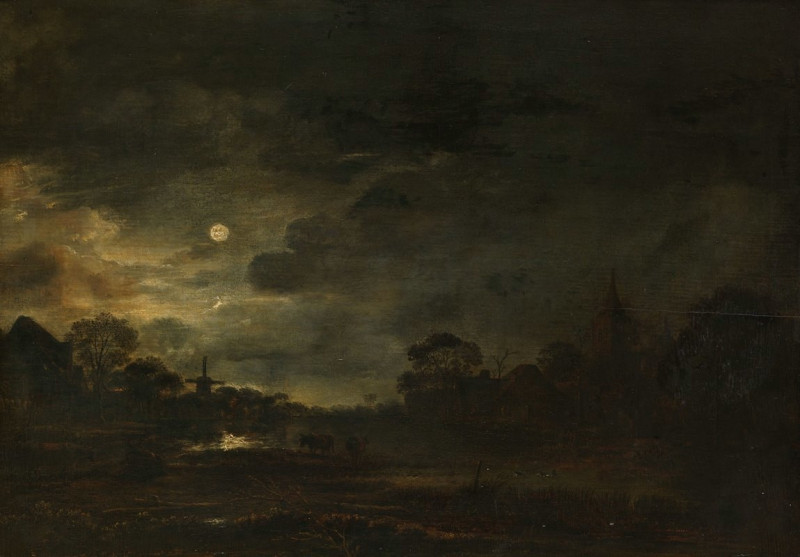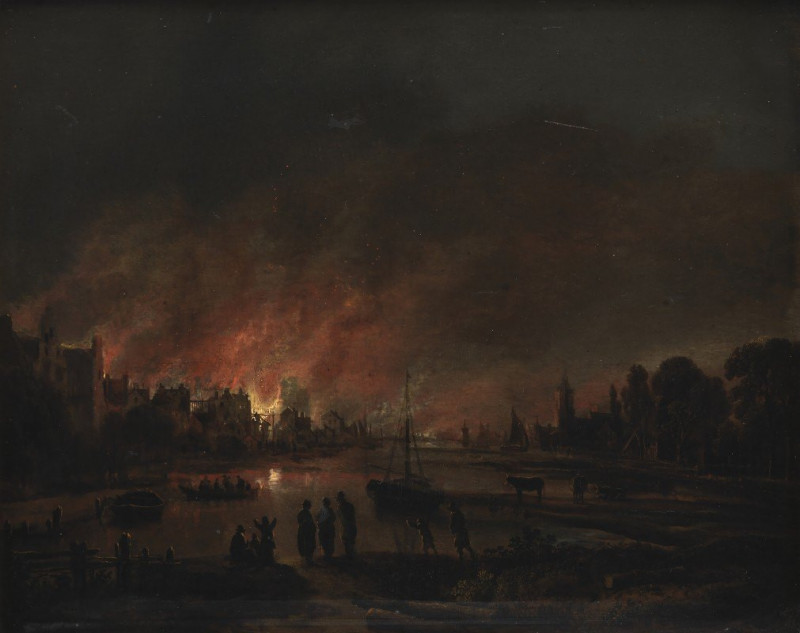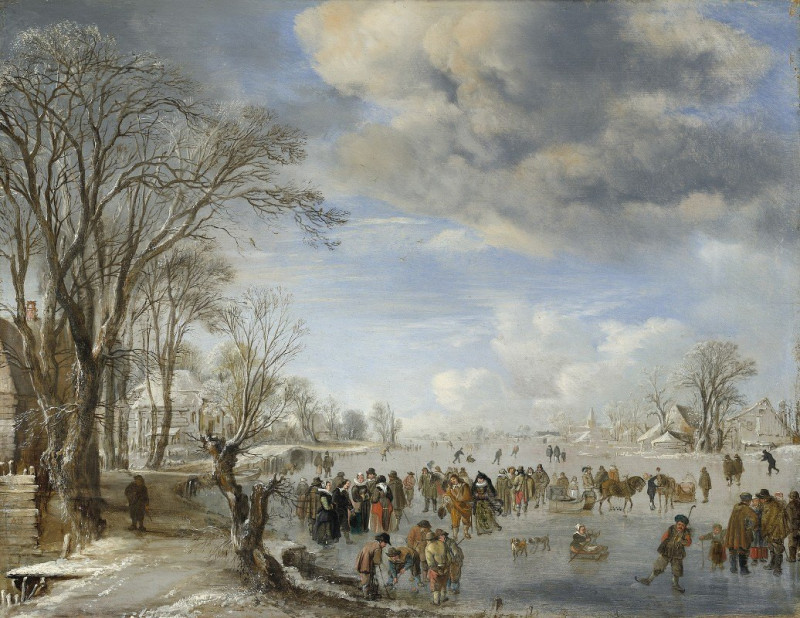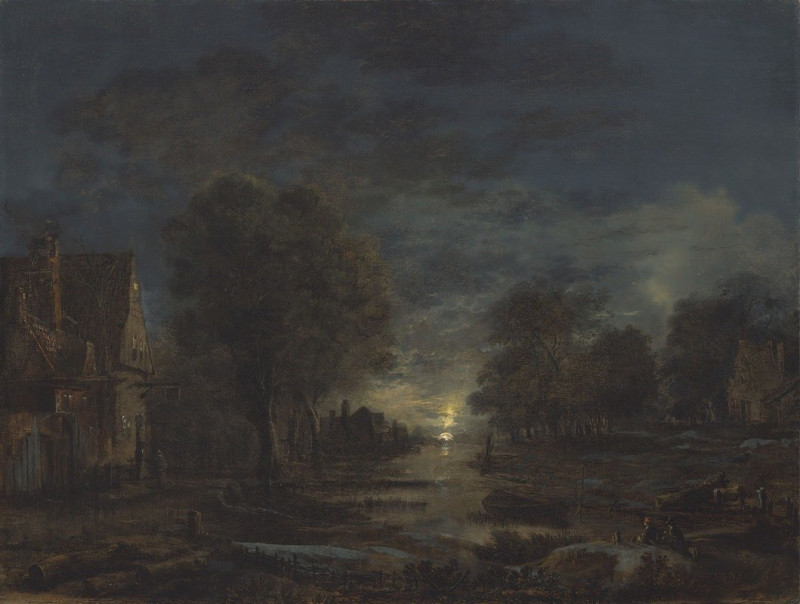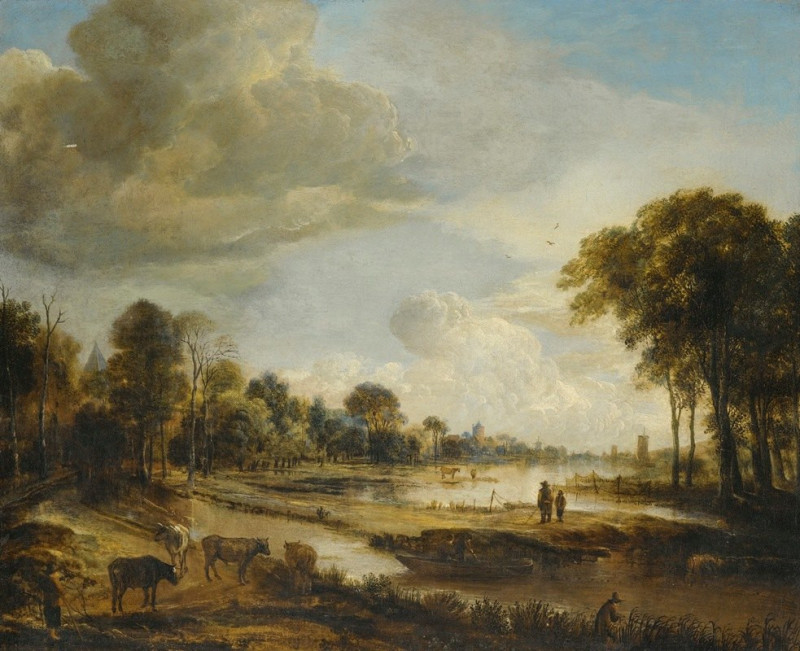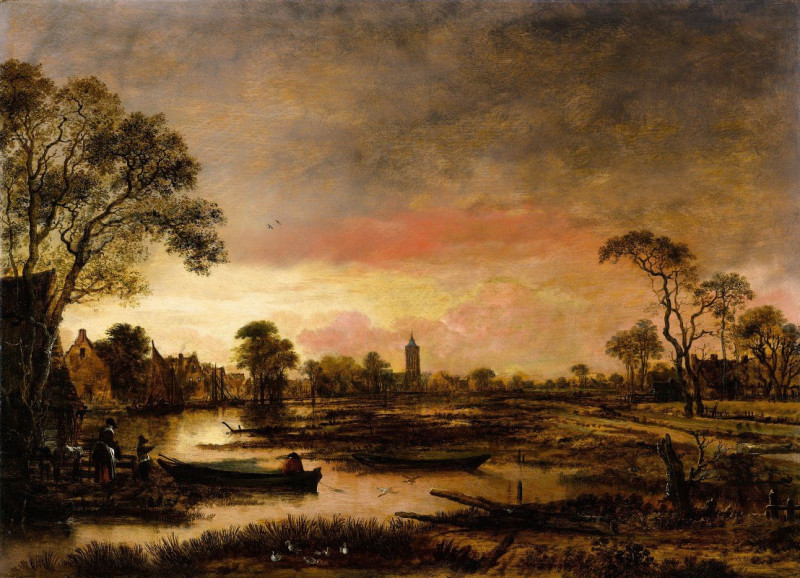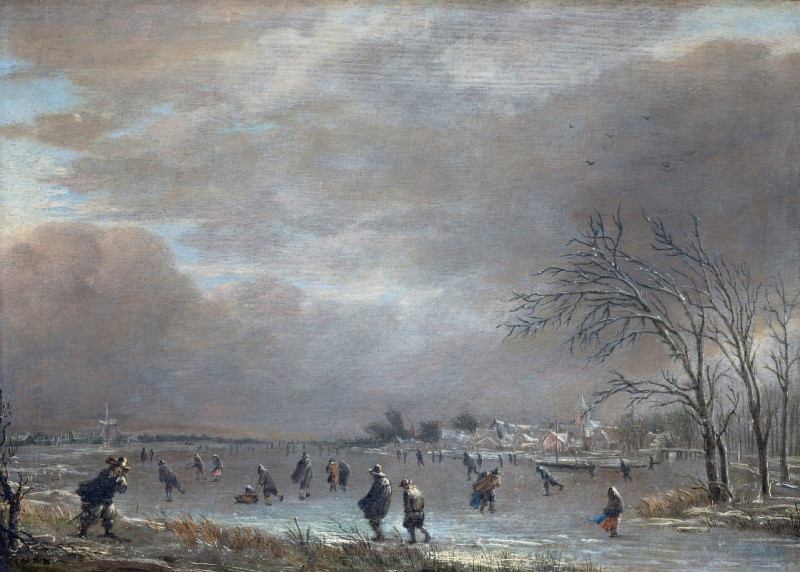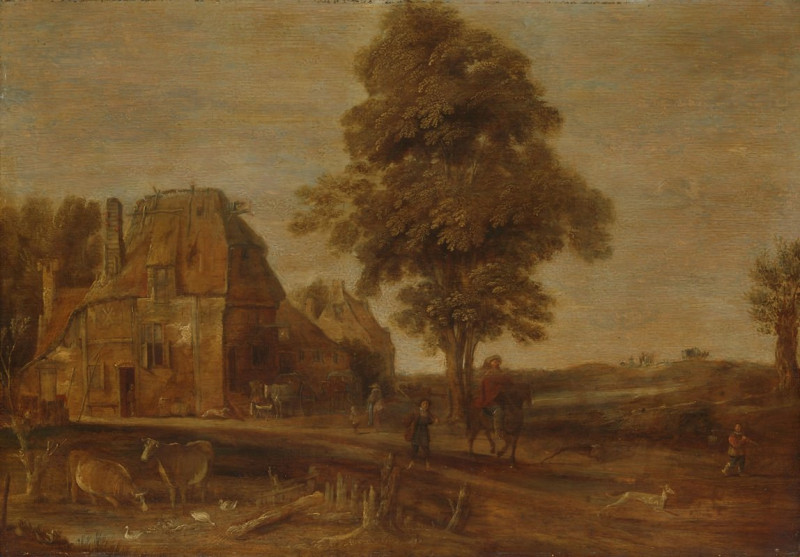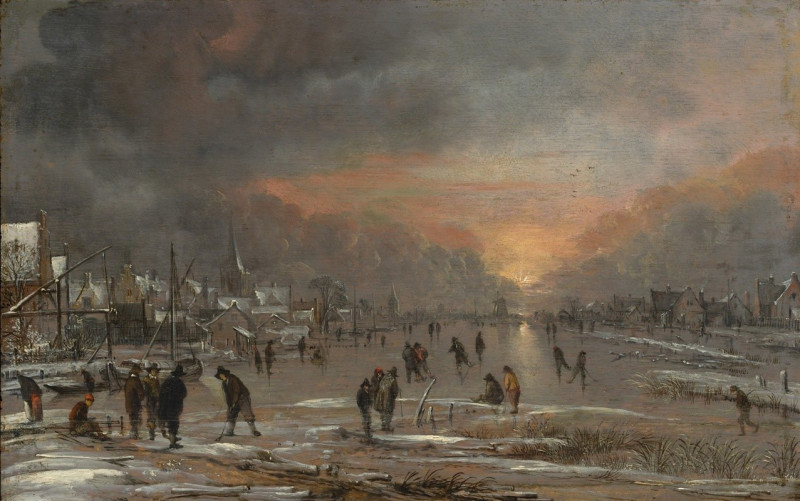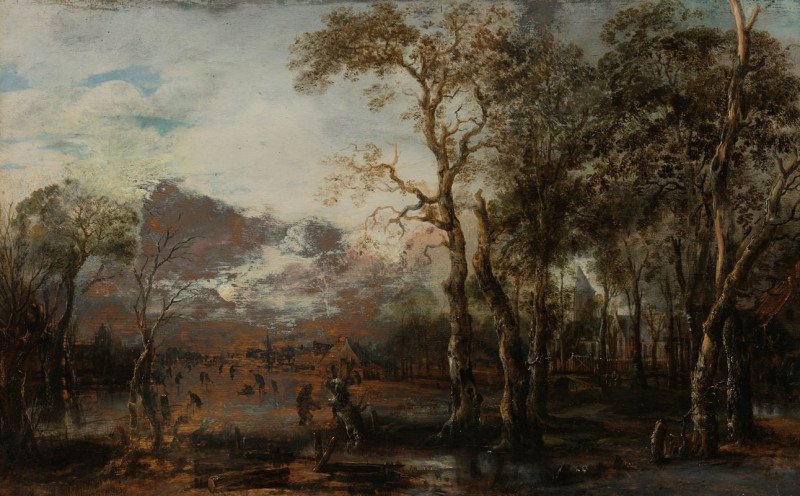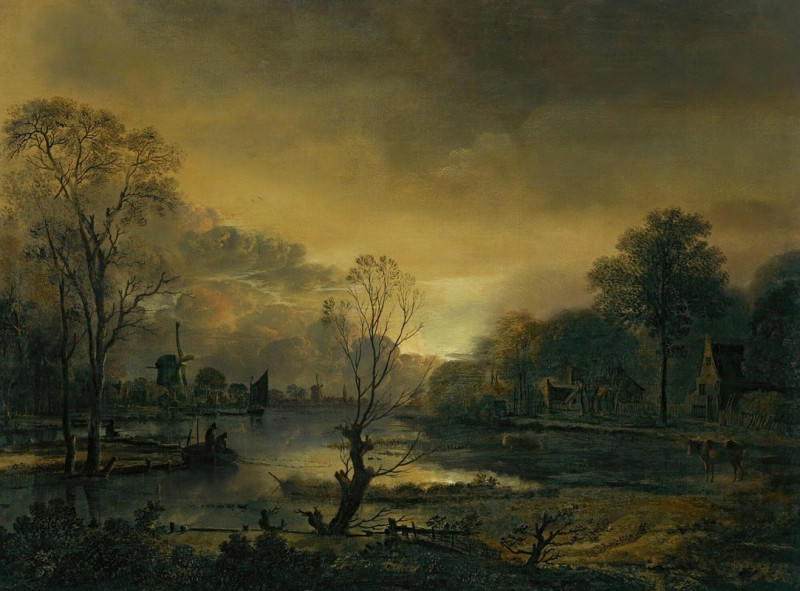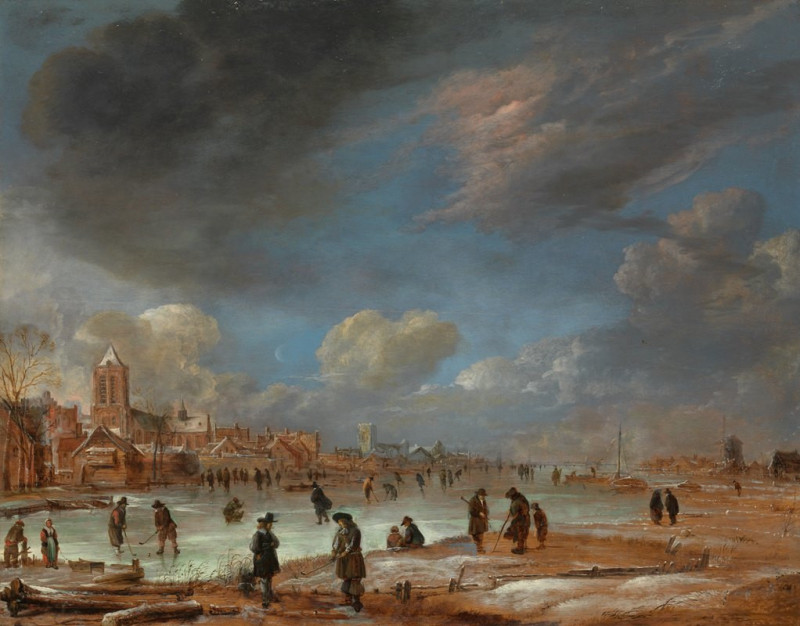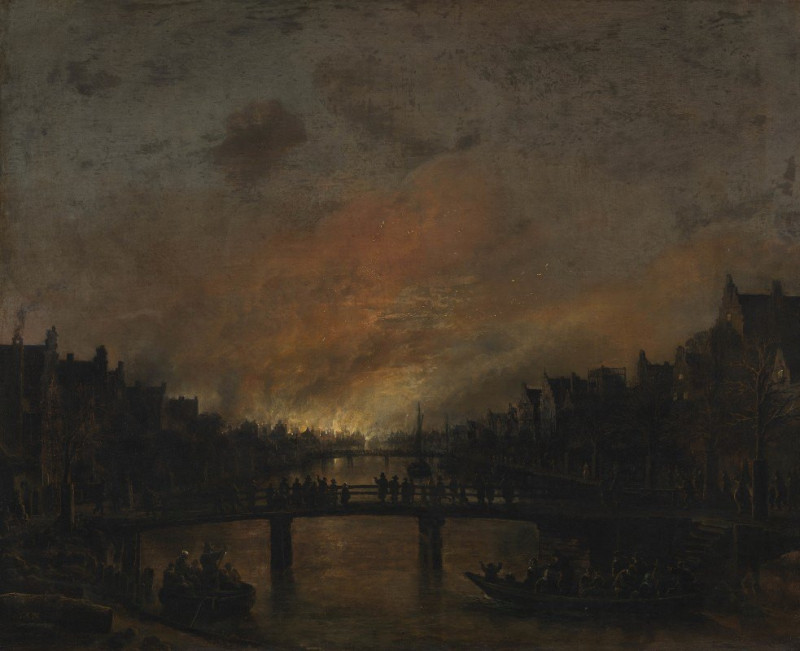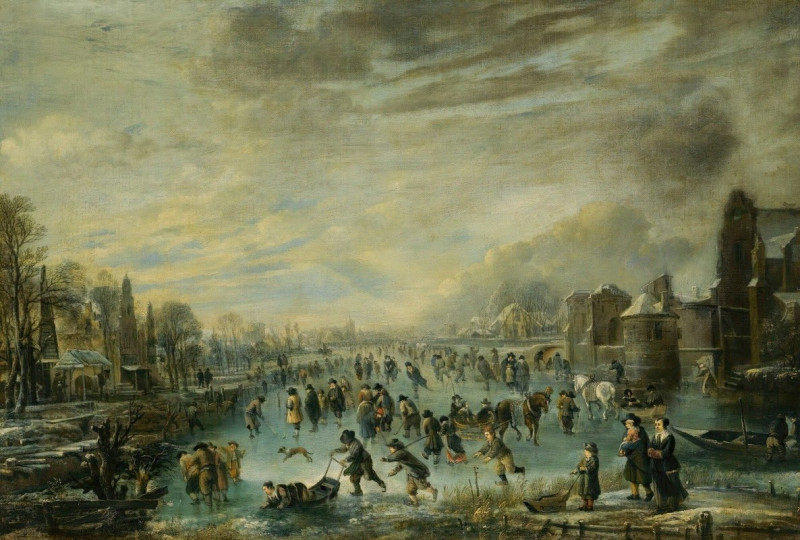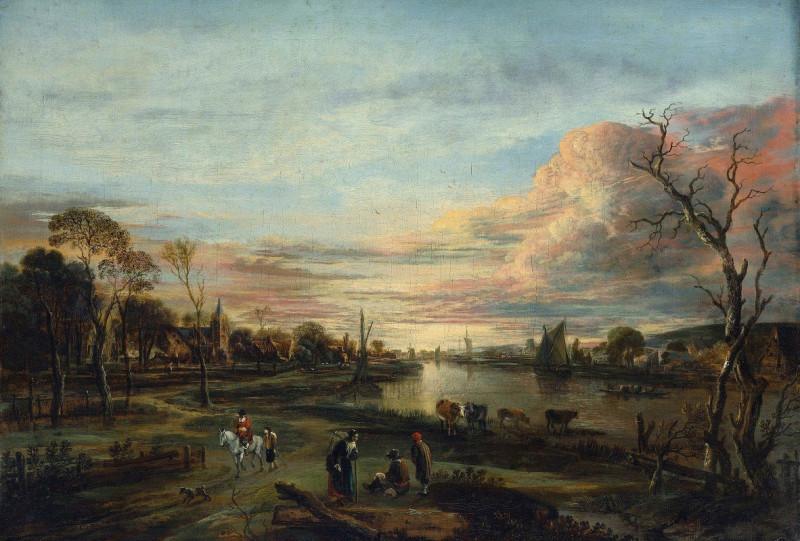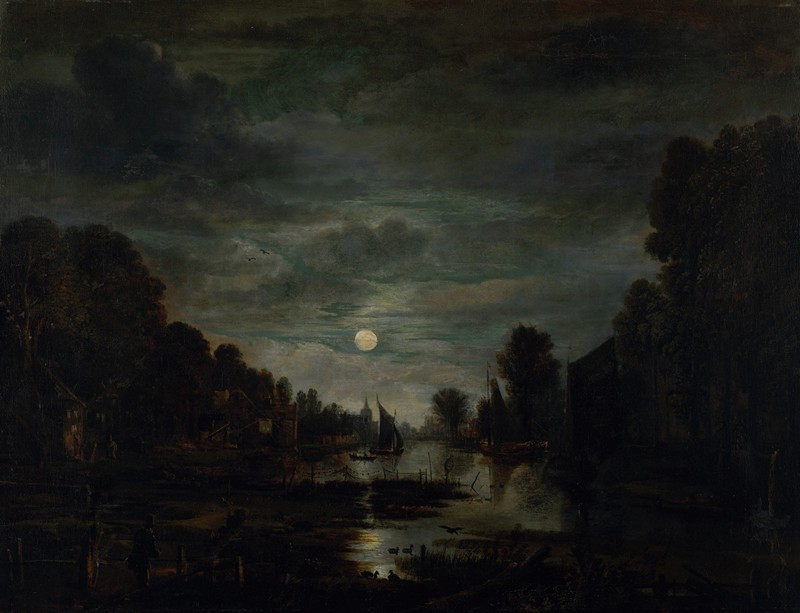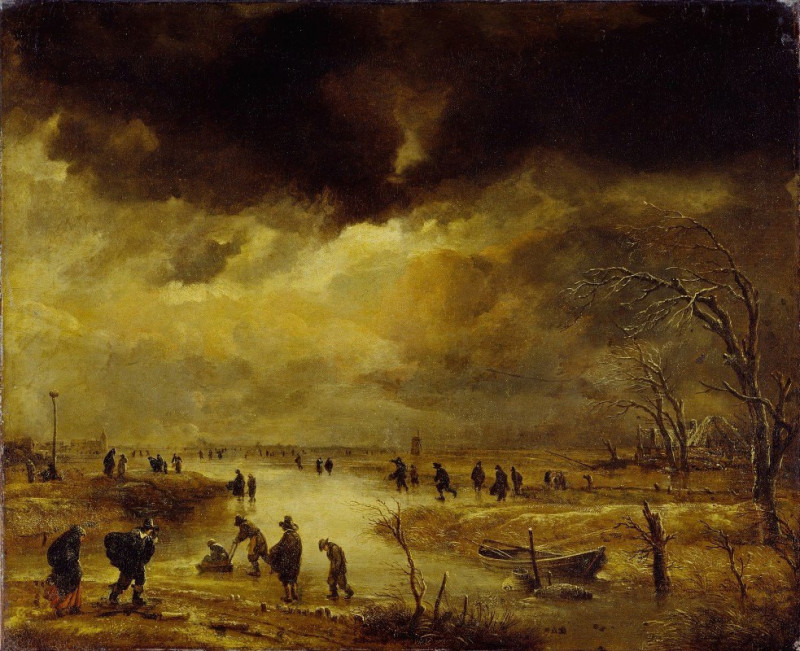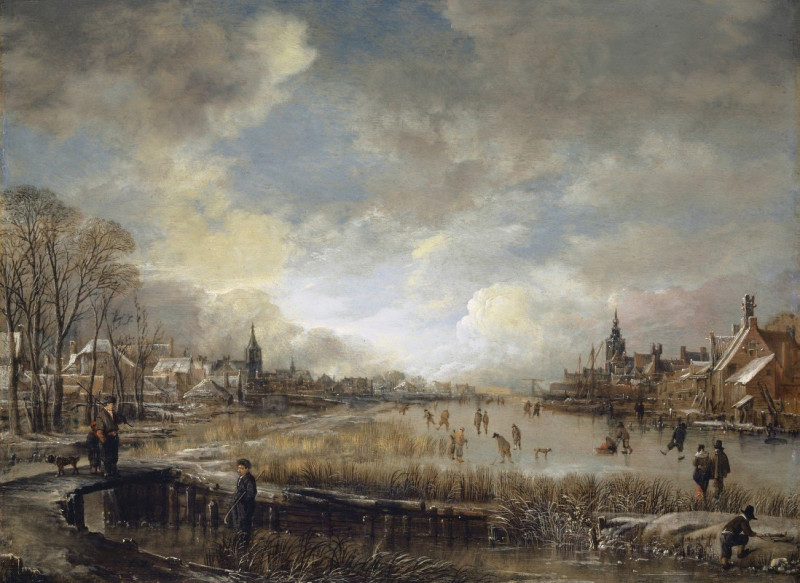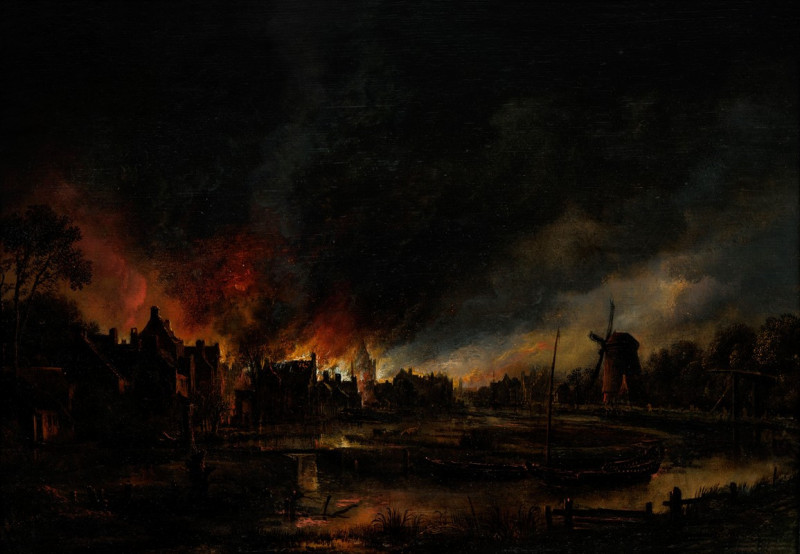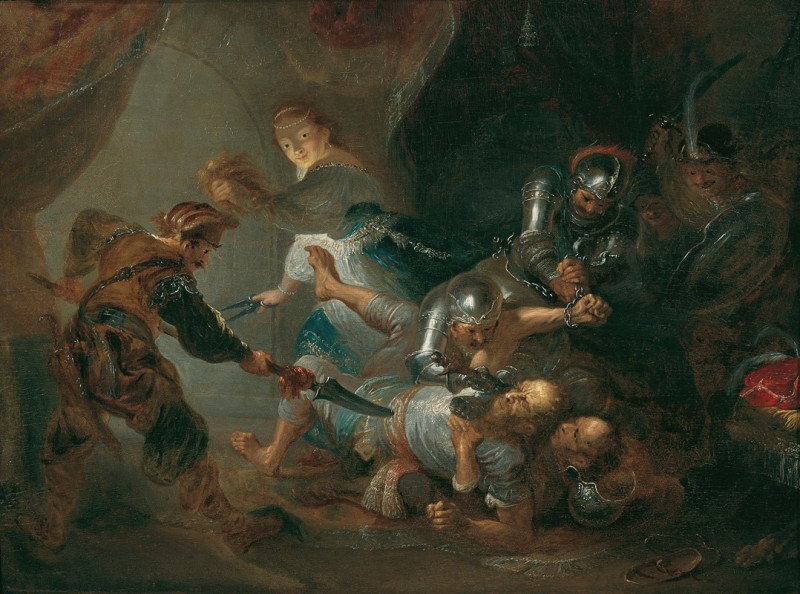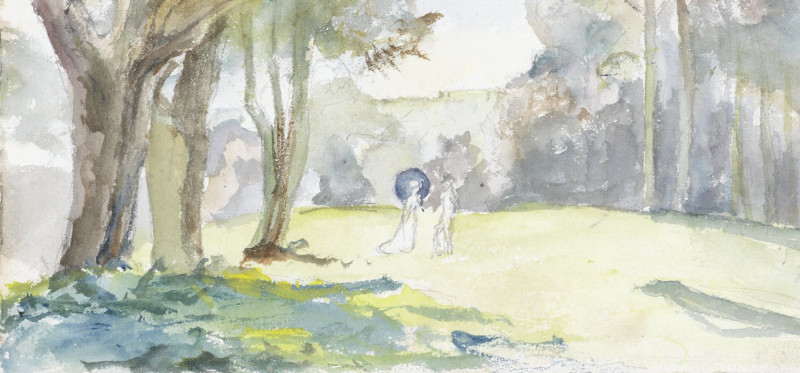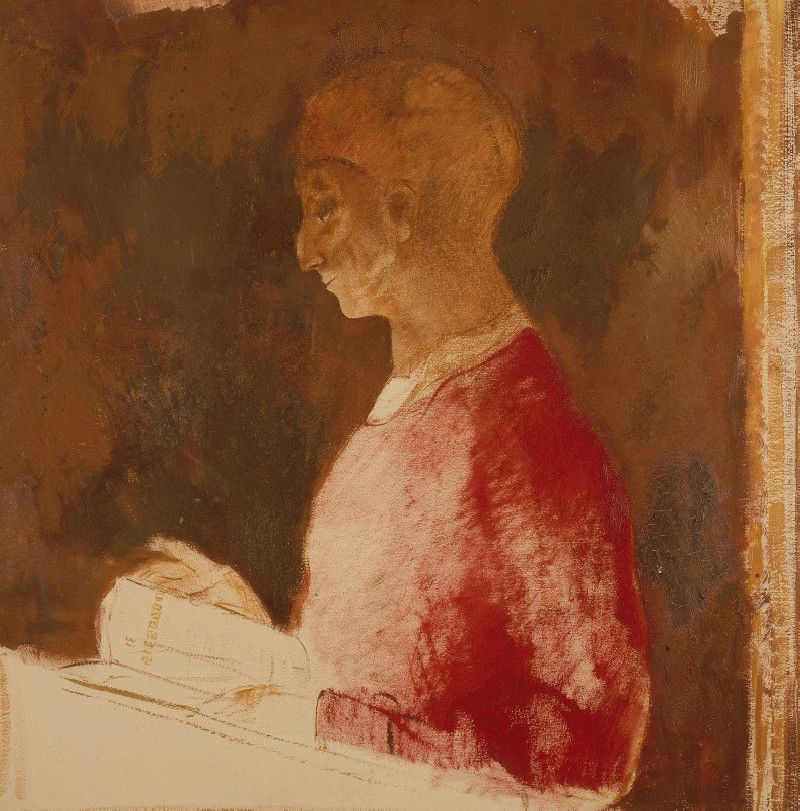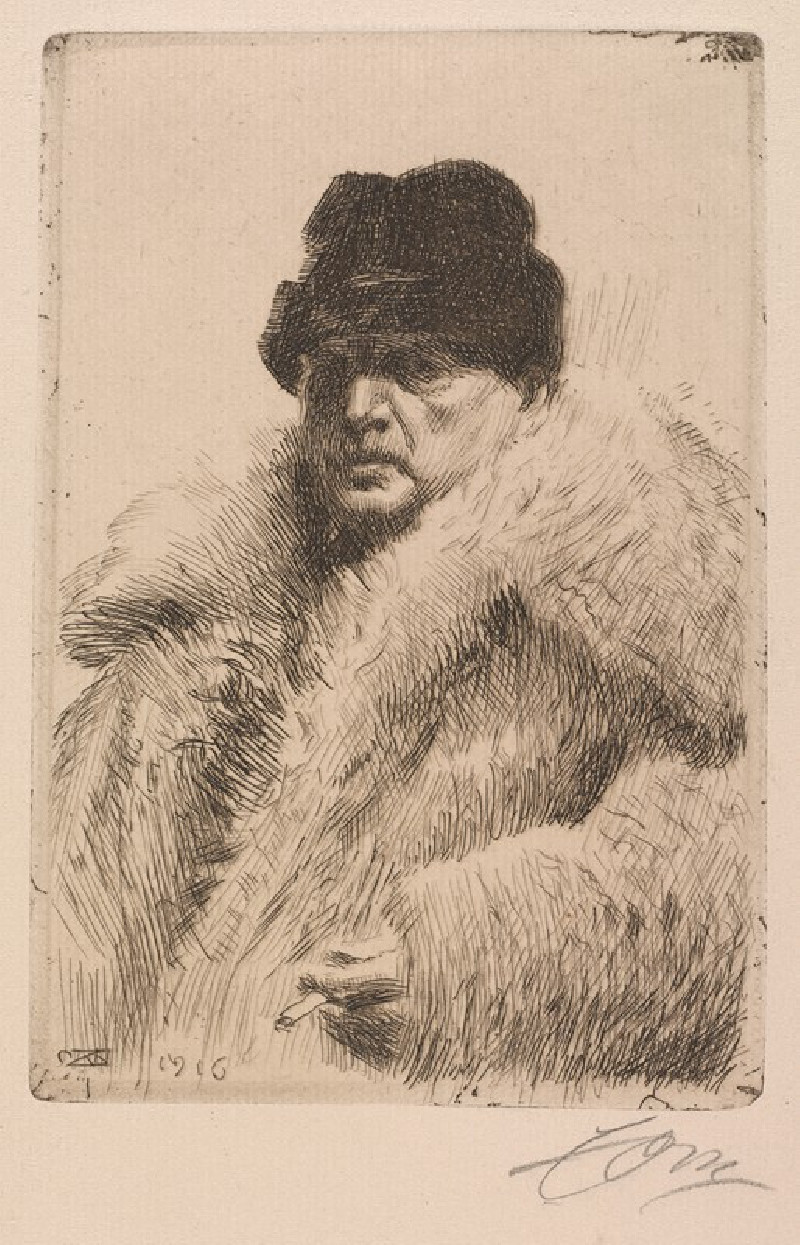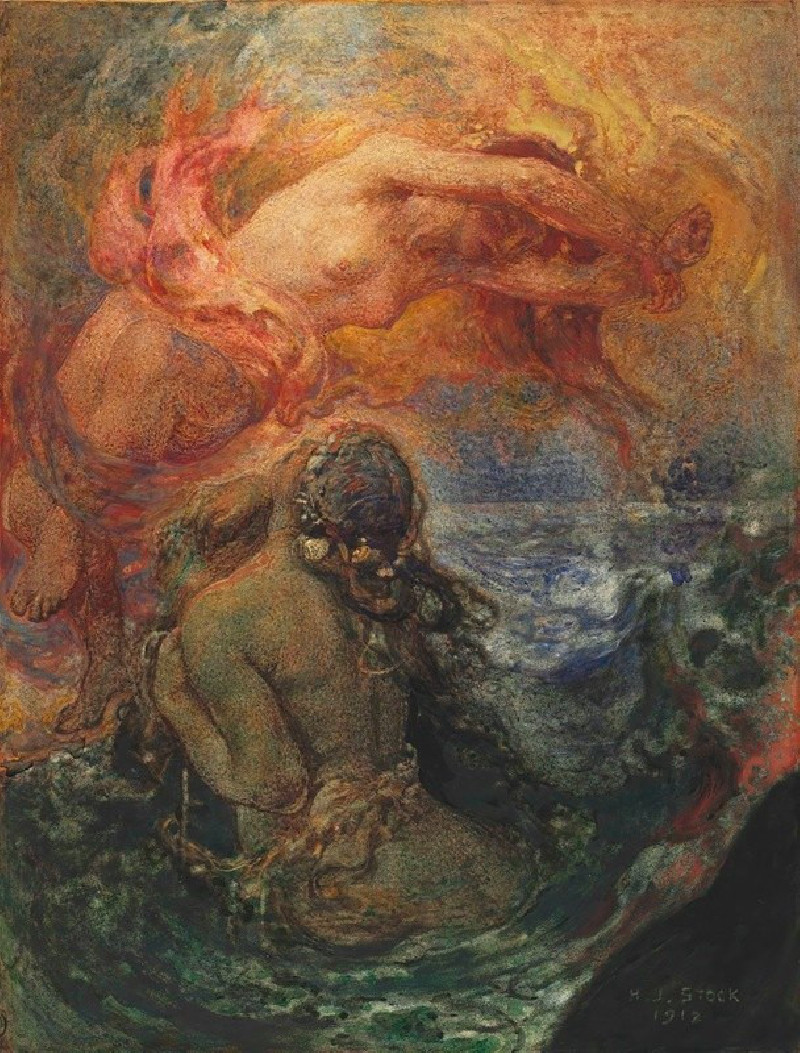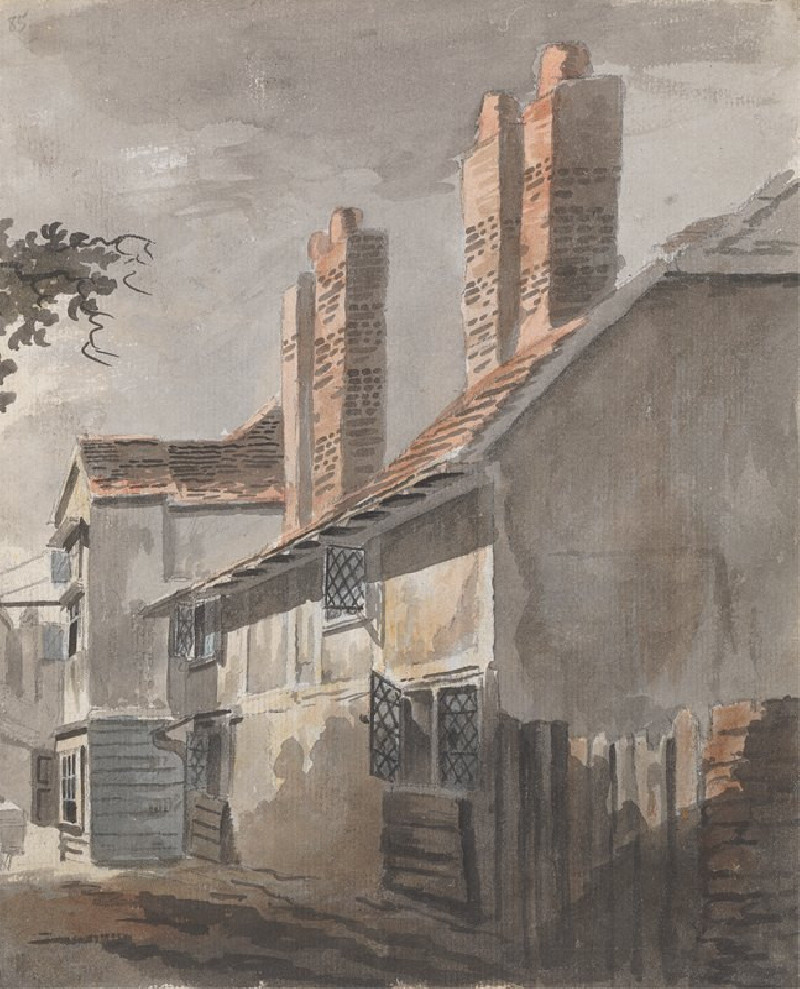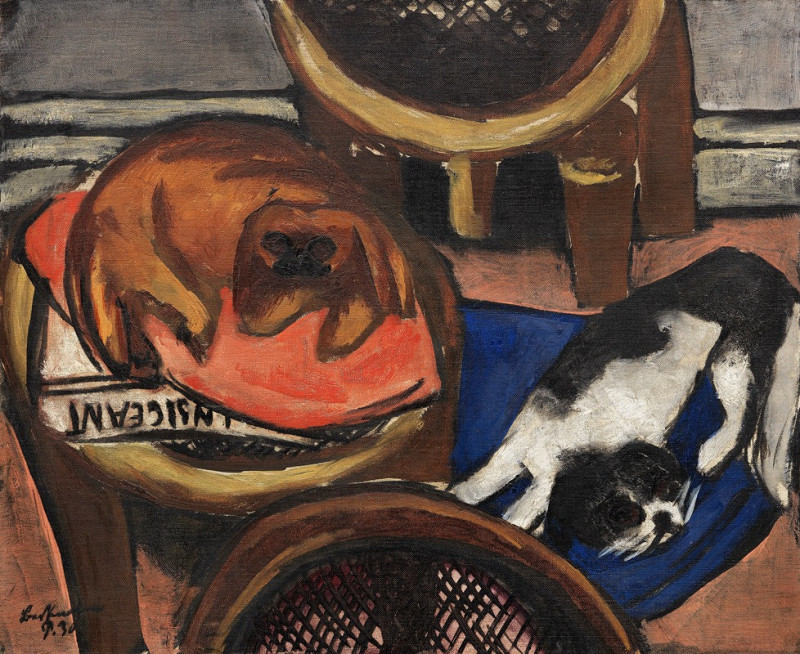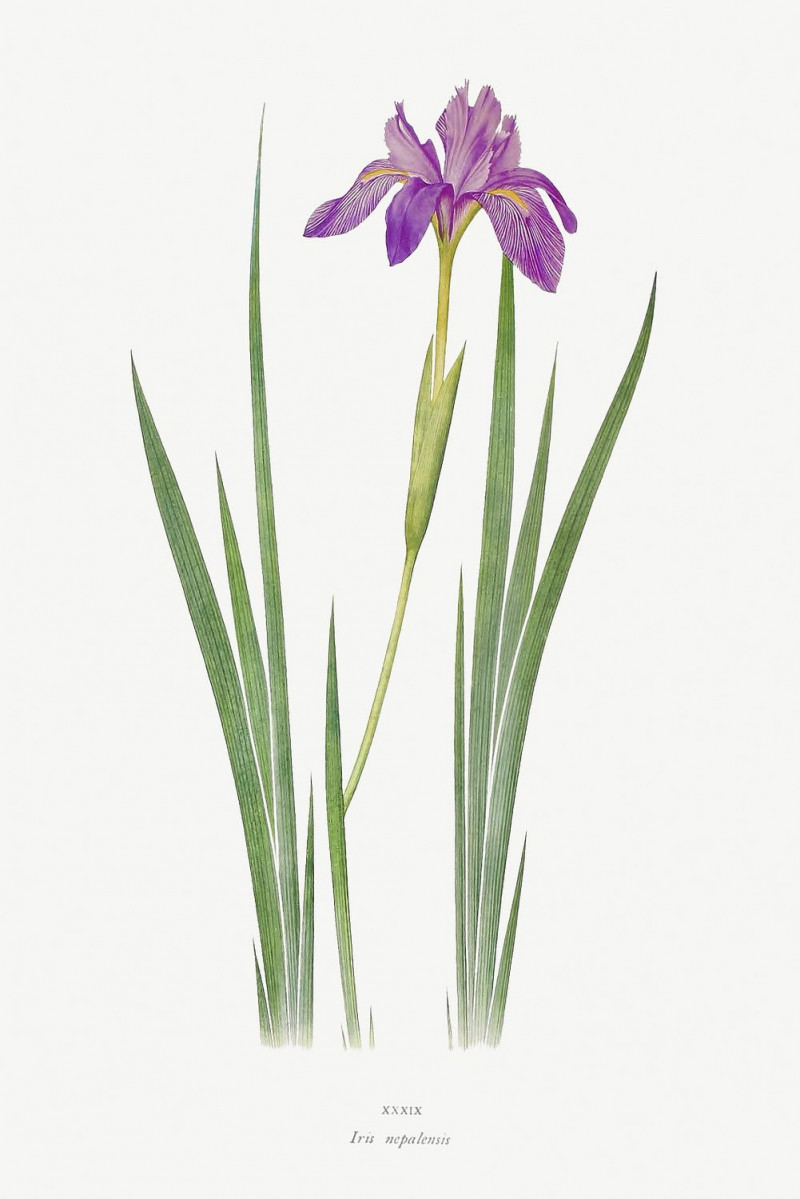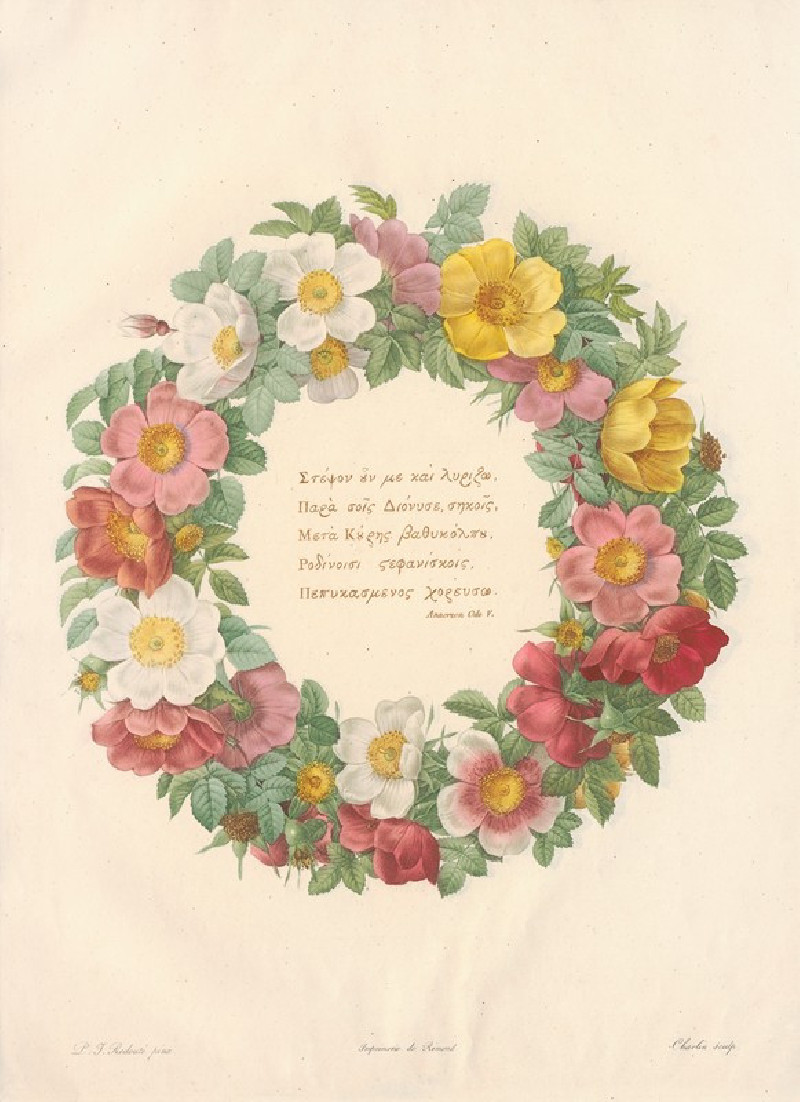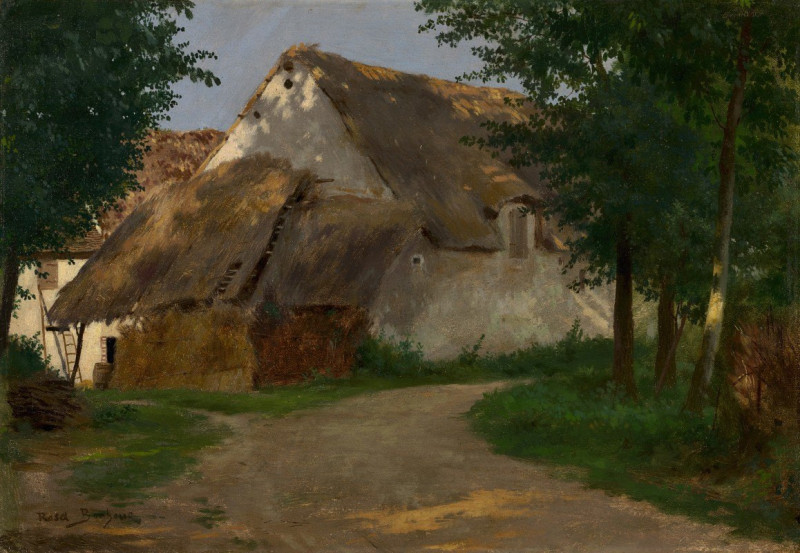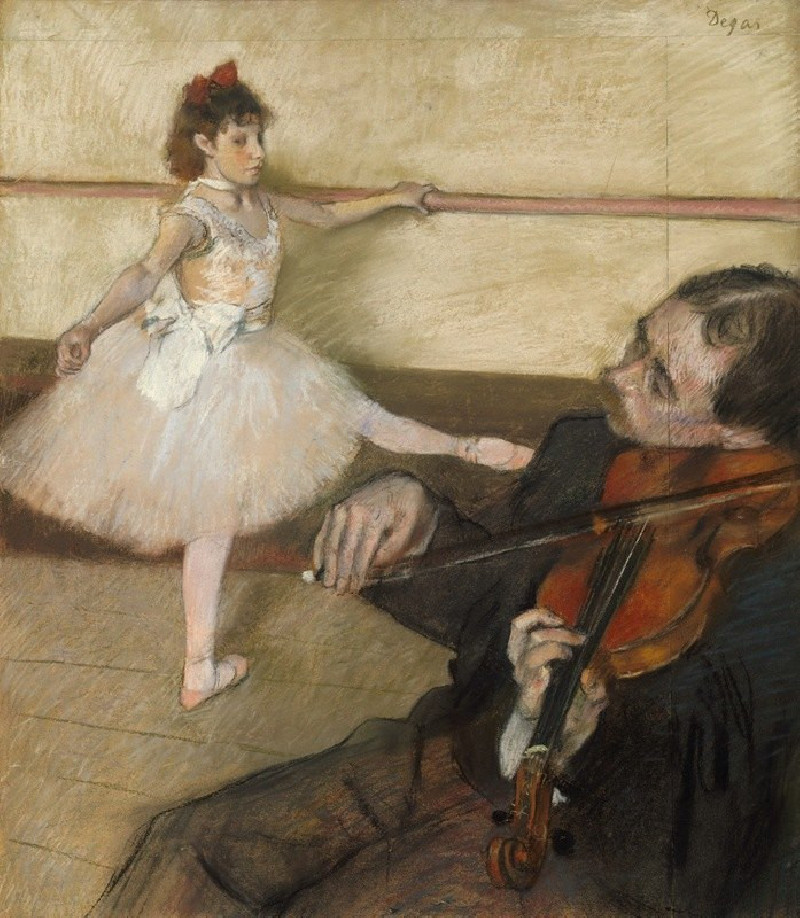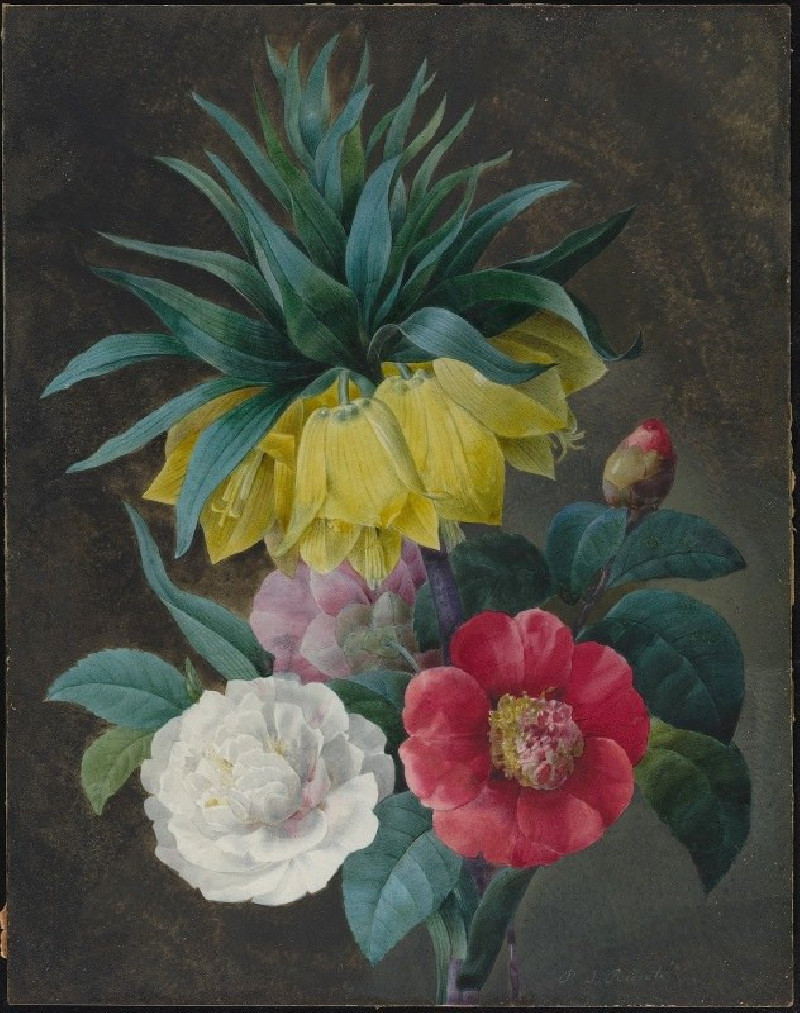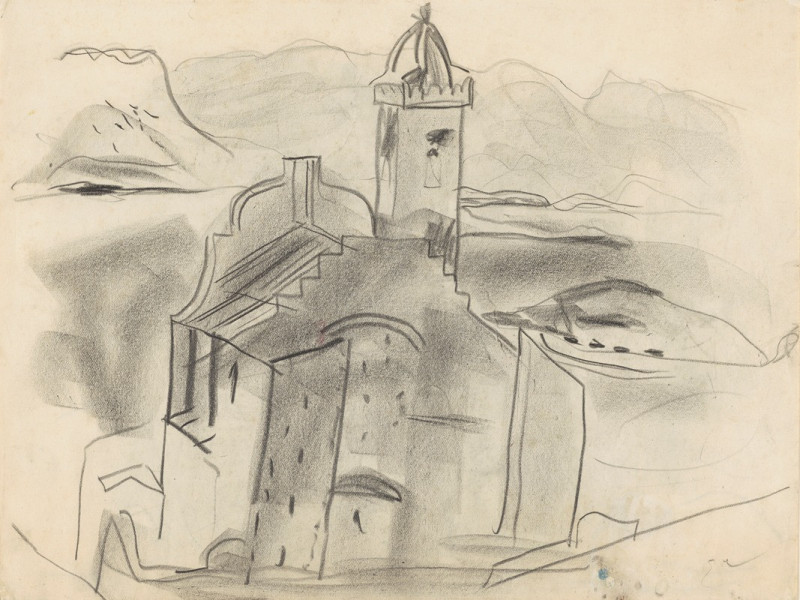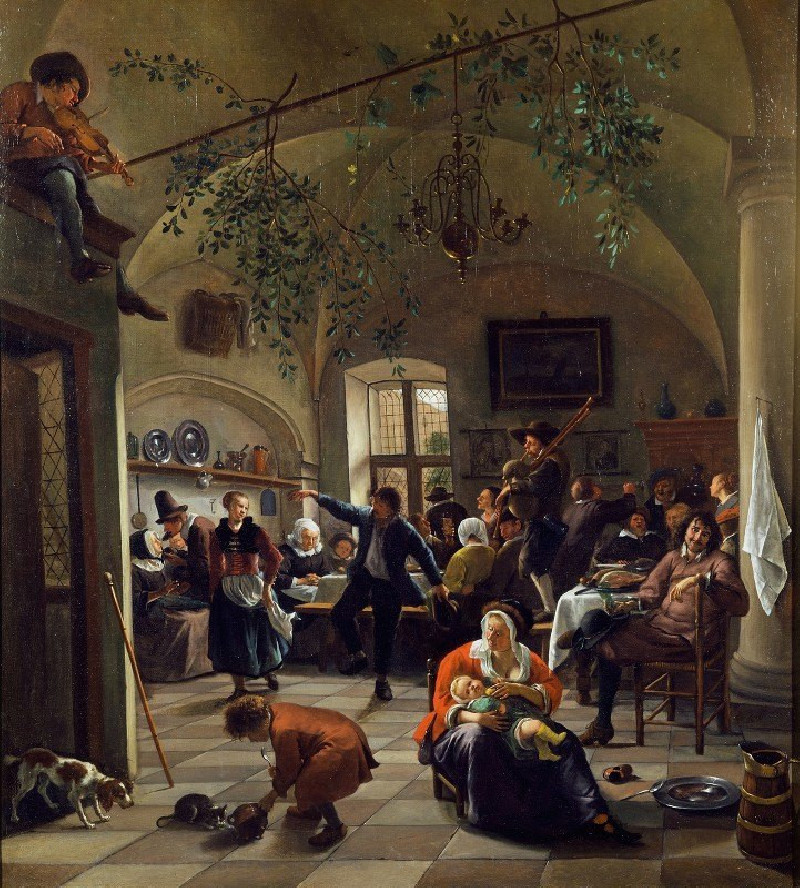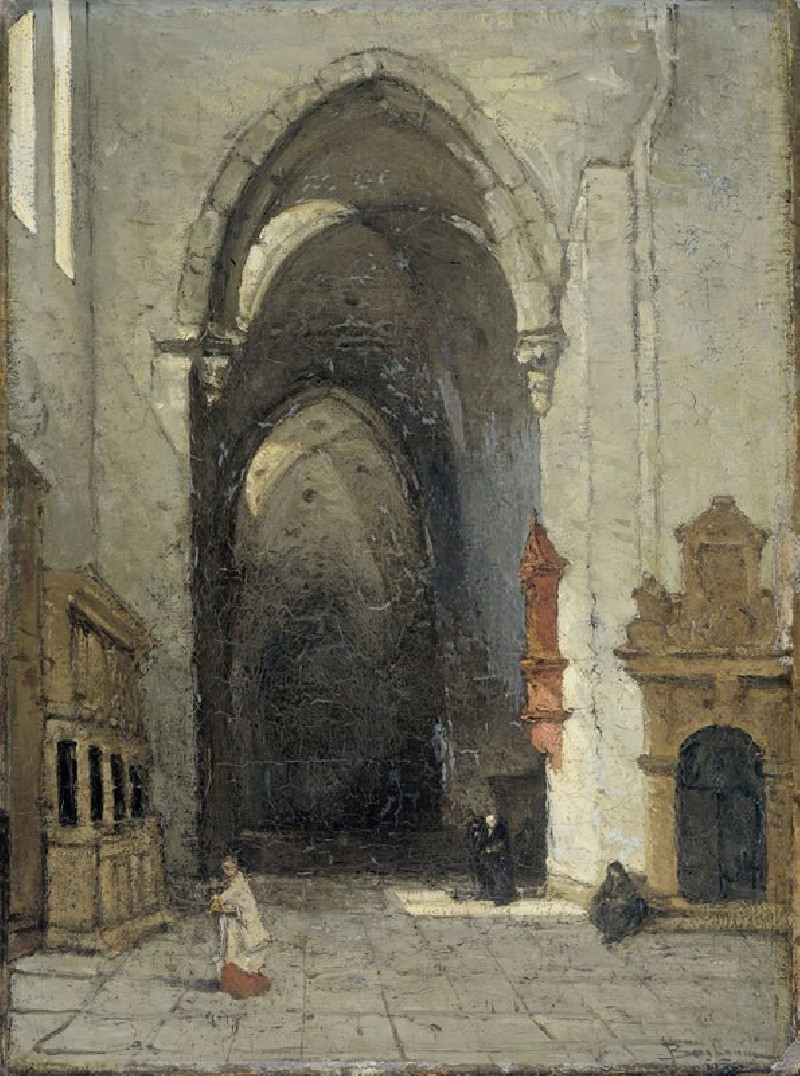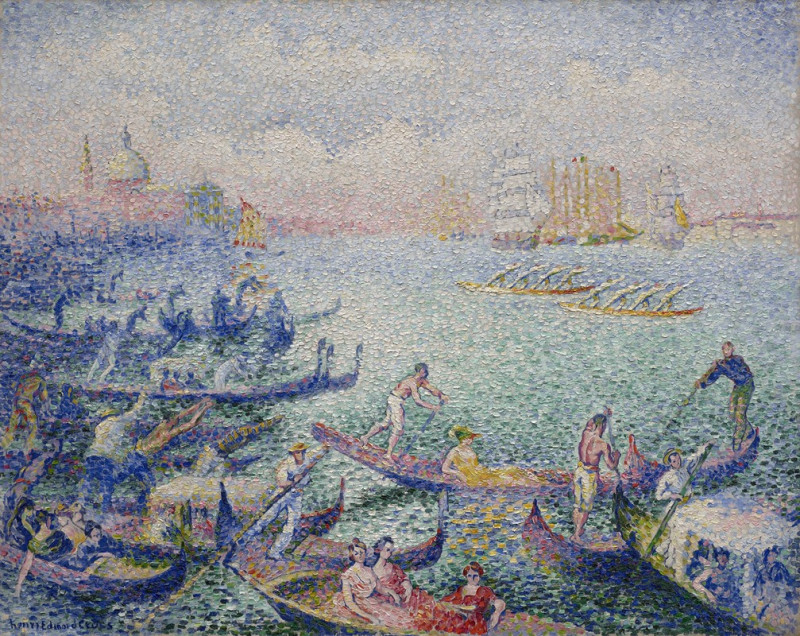Coucher de soleil sur l’Yssel (1645)
Technique: Giclée quality print
Recommended by our customers
More about this artwork
"Coucher de soleil sur l’Yssel" by Aert van der Neer, a masterpiece painted in 1645, is a vivid portrayal of a tranquil sunset over the Yssel river in the Netherlands. This oil painting captures the delicate interplay of light and shadow, as the setting sun bathes the landscape in a warm, golden glow. The sky, a brilliant display of orange and yellows, forms a striking backdrop to the silhouetted figures and structures.In the foreground, Van der Neer meticulously details a peaceful rural scene. Cattle meander near the water’s edge, reflecting gently in the calm river. Fishermen, absorbed in their task, enhance the painting's sense of everyday life continuing amidst nature's grand display. A typical Dutch windmill stands prominently on the right, its sails poised as if in mid-turn, contributing to the scene’s rustic charm.The trees and bushes are skillfully painted to create depth and texture, while the distant spires of a town suggest a community living in harmony with its environment.
Delivery
Returns
Aert van der Neer, or Aernout or Artus (c. 1603 – 9 November 1677), was a landscape painter of the Dutch Golden Age, specializing in small night scenes lit only by moonlight and fires, and snowy winter landscapes, both often looking down a canal or river. He was a contemporary of Aelbert Cuyp and Meindert Hobbema, and like the latter he lived and died in comparative obscurity.

